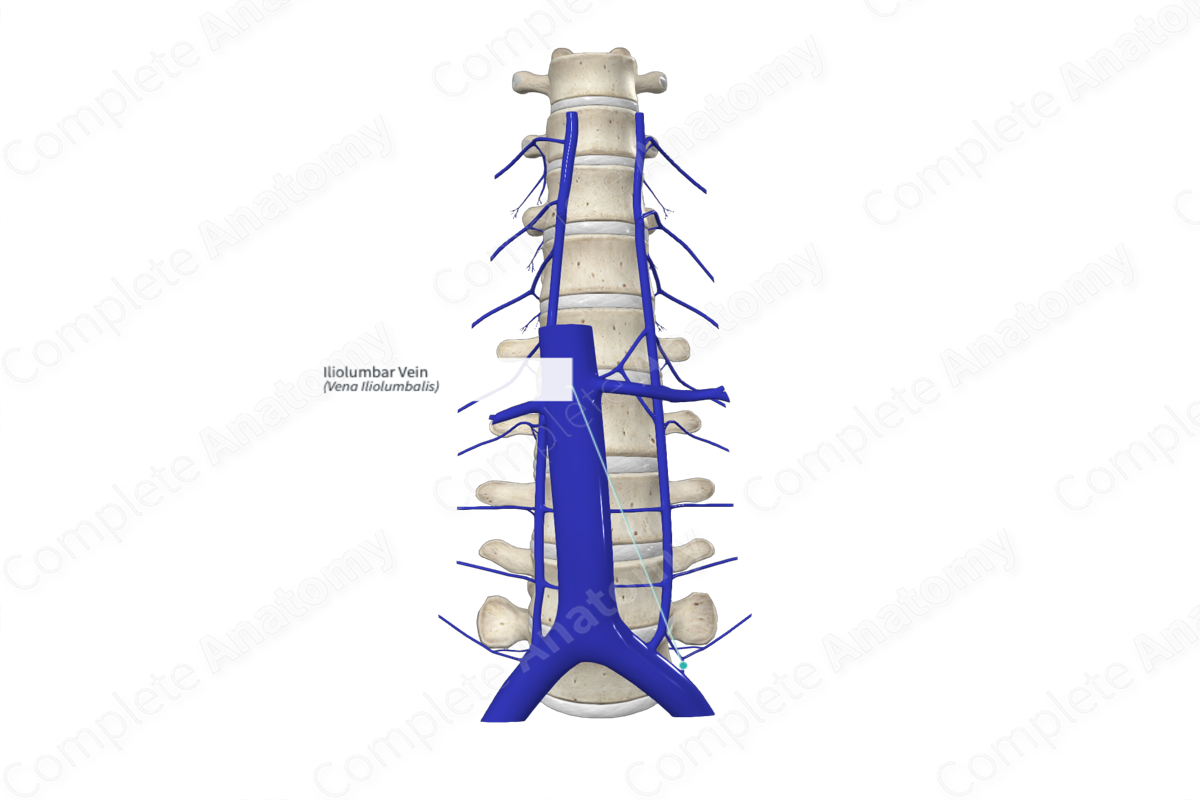
Quick Facts
Origin: Union of iliac, spinal, and lumbar branches.
Course: Travel medially from the medial border of psoas major to drain into common iliac veins.
Tributaries: Fourth and fifth lumbar and iliac vein and spinal branches.
Drainage: Iliacus, psoas major, quadratus lumborum, ilium, posterior lumbar and sacral regions.
Origin
From its origin, the iliolumbar vein receives anastomotic tributaries from the fourth and fifth lumbar veins.
Course
The iliolumbar vein courses inferiorly along the sacrospinous joint to drain into the internal iliac vein, or more commonly into the common iliac vein. It often bifurcates and drains into both the internal iliac and the common iliac veins (Dorland, 2011).
Tributaries
The iliolumbar vein drains the fourth and fifth lumbar veins.
The spinal branches of the iliolumbar vein drain into the iliolumbar vein and pass through the intervertebral foramen between the fifth lumbar vertebrae and sacrum.
Structures Drained
The iliolumbar vein drains the structures of the iliac fossae and the lumbar and sacral region. This includes the Iliacus, psoas major, and quadratus lumborum muscles.
References
Dorland, W. (2011) Dorland's Illustrated Medical Dictionary. 32nd edn. Philadelphia, USA: Elsevier Saunders.
Learn more about this topic from other Elsevier products



